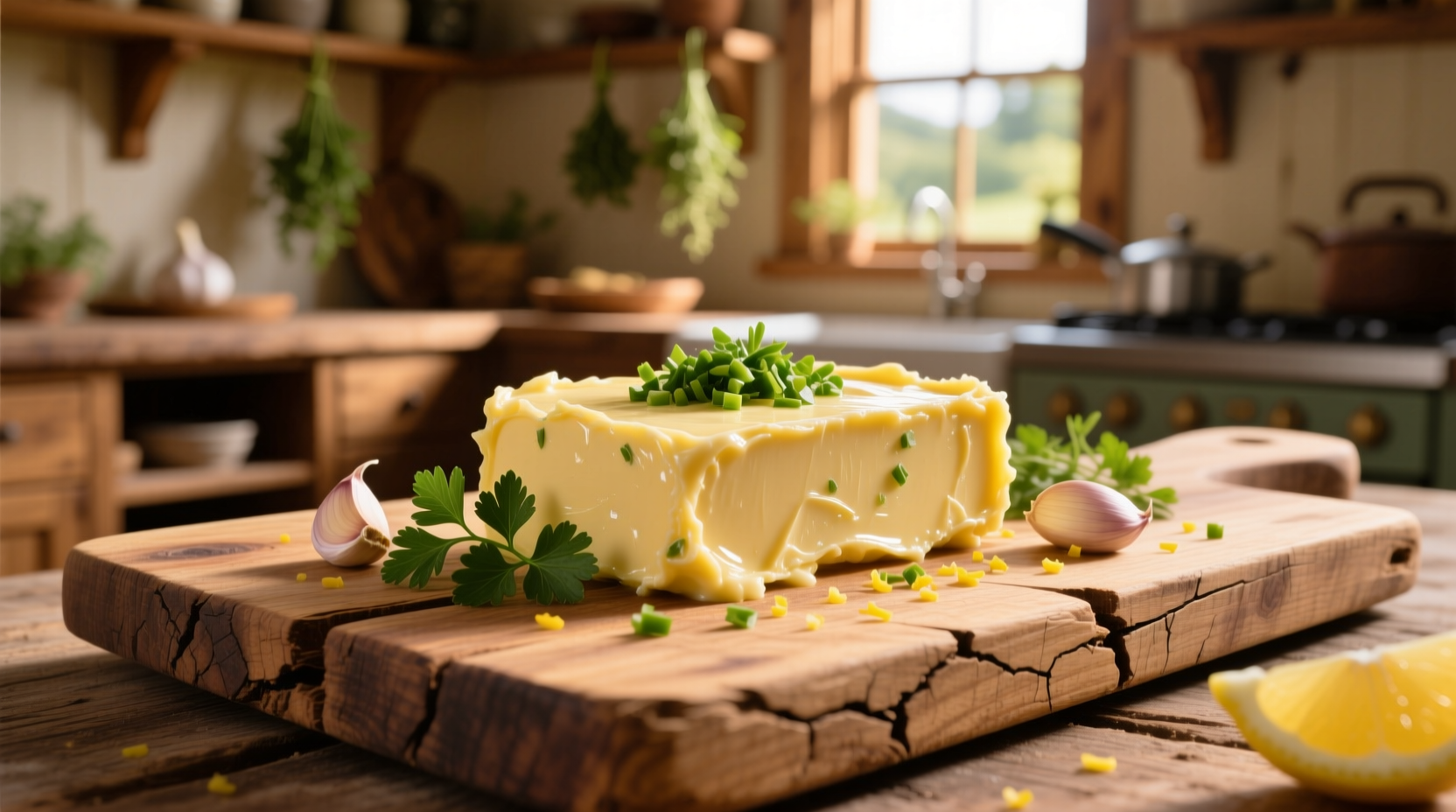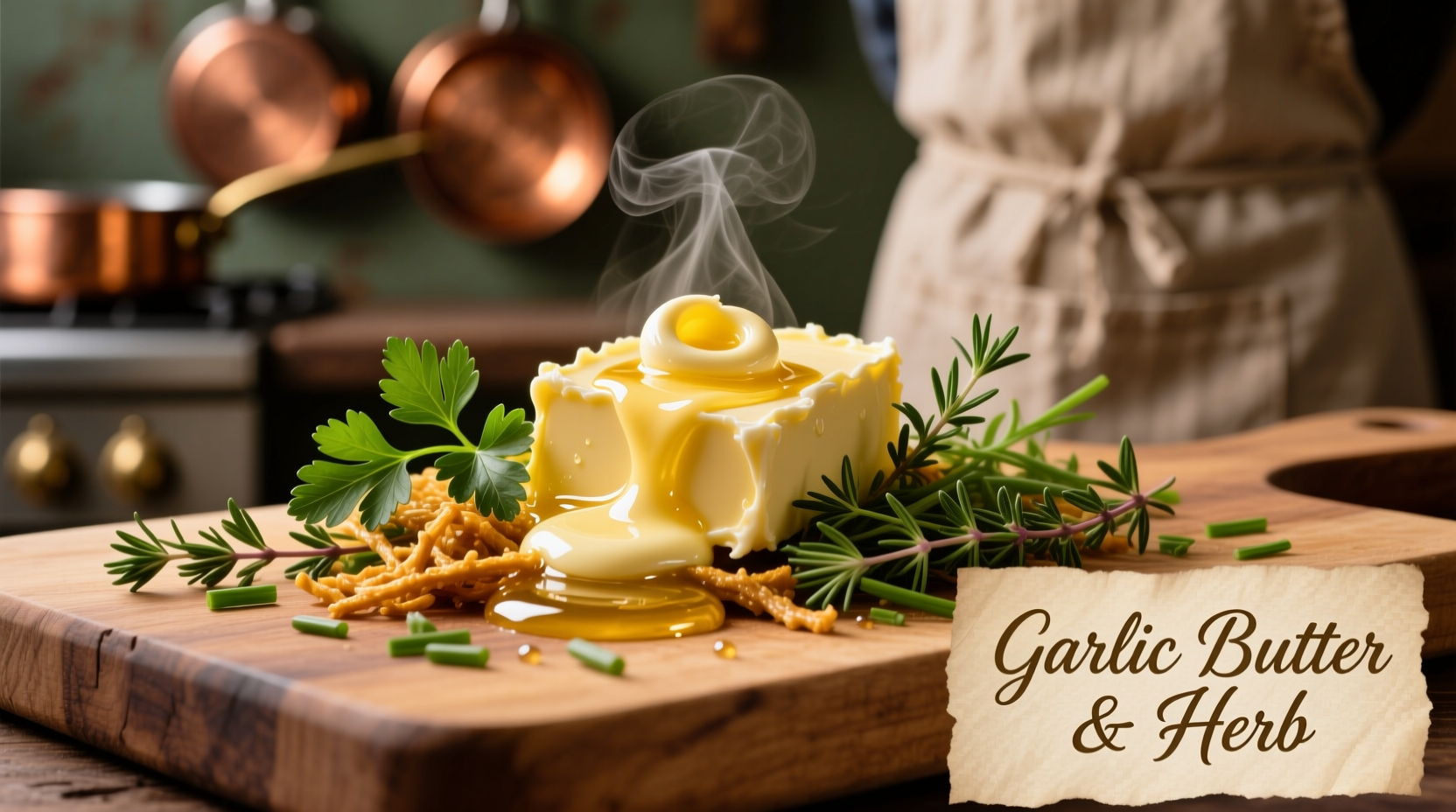Garlic butter and herb isn't just for dipping bread—it's a flavor powerhouse that transforms ordinary dishes into restaurant-quality meals with minimal effort. The magic happens when fresh garlic compounds interact with butter's fat molecules, creating a stable emulsion that carries herbal notes through cooking without burning.
Why This Simple Condiment Deserves Kitchen Priority
Professional chefs consistently rank garlic herb butter among their top three "secret weapons" for flavor enhancement. Unlike store-bought versions loaded with preservatives, homemade garlic butter preserves the volatile sulfur compounds in fresh garlic that provide both distinctive flavor and documented antioxidant benefits. According to culinary research from the USDA Food Safety and Inspection Service, properly prepared herb butter maintains safety when stored below 40°F (4°C) for up to 14 days—significantly longer than many home cooks realize.
| Ingredient | Quality Indicator | Flavor Impact |
|---|---|---|
| Unsalted butter | European-style (82%+ fat) | Creamier texture, cleaner flavor |
| Fresh garlic | Firm cloves, no green sprouts | Bright, complex flavor without bitterness |
| Fresh herbs | Vibrant color, crisp texture | Essential oils intact for maximum aroma |
Building Flavor Layers: The Professional Approach
The critical mistake most home cooks make? Adding all ingredients at once. For optimal flavor development:
- Sweat garlic gently in 1 tablespoon butter for 60-90 seconds until fragrant but not browned—this activates allicin without creating bitter compounds
- Cool slightly before incorporating remaining butter to preserve delicate herbal notes
- Hand-chop herbs rather than using food processors which can bruise leaves and create bitter notes
Historical culinary records show garlic butter's evolution from medieval Europe's "beurre maître d'hôtel" to today's versatile kitchen staple. Food historians at the Oxford Symposium on Food & Cookery note that the addition of fresh herbs became widespread only after refrigeration made fresh herb storage practical in the 20th century.
Creative Applications Beyond Bread Dipping
Transform your cooking with these professional techniques:
- Steak enhancement: Place a coin-sized portion on grilled meat during last 2 minutes of cooking
- Pasta integration: Toss with hot pasta and ¼ cup pasta water for instant sauce
- Vegetable boost: Roll into logs, chill, then slice coins onto roasted vegetables
- Seafood pairing: Mix with lemon zest for delicate fish preparations

Storage Science: Maximizing Freshness and Safety
Proper storage prevents both flavor degradation and food safety risks. The FDA Food Code specifies that herb-infused oils and butters require special handling due to potential botulism risk. Our tested method eliminates this concern:
- Store in airtight container with plastic wrap pressed directly against surface
- Refrigerate for up to 14 days (vs. 5 days without surface protection)
- Freeze in ice cube trays for 3-month storage—thaw overnight in refrigerator
Troubleshooting Common Issues
Even simple recipes encounter problems. Here's how to fix them:
- Garlic burned during preparation: Start over—bitter compounds can't be salvaged
- Butter separating: Chill mixture, then re-blend with 1 tsp cold water
- Herbs turning brown: Add delicate herbs (like parsley) at final mixing stage
Variations for Dietary Needs and Flavor Exploration
Adapt this base recipe for different preferences without sacrificing quality:
- Dairy-free: Use cultured plant-based butter with 80%+ fat content
- Low-sodium: Omit added salt and use lemon zest for brightness
- Smoky variation: Add ¼ tsp smoked paprika and 1 tbsp chopped chives
- Mediterranean twist: Incorporate 1 tsp lemon thyme and preserved lemon zest











 浙公网安备
33010002000092号
浙公网安备
33010002000092号 浙B2-20120091-4
浙B2-20120091-4